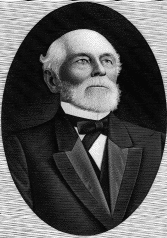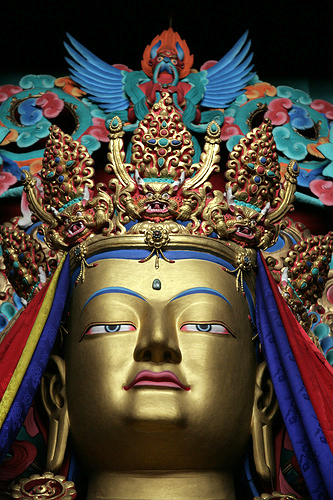|
Shardza Tashi Gyaltsen
Shardza Tashi Gyaltsen () (1859 - 1933 or 1935) was a great Dzogchen master of the Bon tradition of Tibet who took not only Bon disciples, but gathered students from all traditions of Tibetan Buddhism. According to tradition, Shardza Tashi Gyeltsen famously realized the rainbow body. Chaoul (2006) opened the discourse of Bon traditions of Trul khor into Western scholarship in English with his thesis from Rice University, which makes reference to writings of Shardza Tashi Gyaltsen, particularly the ''Most Profound Heavenly Storehouse None Other than the Oral Transmission of Trul Khor Energy Control Practices'' (). Literary works *'The Self-Dawning of the Three Bodies' ()Gorvine, William M. (2006). ''The Life of a Bonpo Luminary: Sainthood, Partisanship and Literary Representation in a 20th Century Tibetan Biography''. Dissertation. University of Virginia: Department of Religious Studies. Source(accessed: Saturday October 31, 2009), p.2 *byang zab nam mkha' mdzod chen las snyan rg ... [...More Info...] [...Related Items...] OR: [Wikipedia] [Google] [Baidu] |
Tibet
Tibet (; ''Böd''; ) is a region in East Asia, covering much of the Tibetan Plateau and spanning about . It is the traditional homeland of the Tibetan people. Also resident on the plateau are some other ethnic groups such as Monpa people, Monpa, Tamang people, Tamang, Qiang people, Qiang, Sherpa people, Sherpa and Lhoba peoples and now also considerable numbers of Han Chinese and Hui people, Hui settlers. Since Annexation of Tibet by the People's Republic of China, 1951, the entire plateau has been under the administration of the People's Republic of China, a major portion in the Tibet Autonomous Region, and other portions in the Qinghai and Sichuan provinces. Tibet is the highest region on Earth, with an average elevation of . Located in the Himalayas, the highest elevation in Tibet is Mount Everest, Earth's highest mountain, rising 8,848.86 m (29,032 ft) above sea level. The Tibetan Empire emerged in the 7th century. At its height in the 9th century, the Tibet ... [...More Info...] [...Related Items...] OR: [Wikipedia] [Google] [Baidu] |
Dzogchen
Dzogchen (, "Great Perfection" or "Great Completion"), also known as ''atiyoga'' ( utmost yoga), is a tradition of teachings in Indo-Tibetan Buddhism and Yungdrung Bon aimed at discovering and continuing in the ultimate ground of existence. The primordial ground (''gzhi'', "basis") is said to have the qualities of purity (i.e. emptiness), spontaneity (''lhun grub'', associated with luminous clarity) and compassion (''thugs rje''). The goal of Dzogchen is knowledge of this basis, this knowledge is called ''rigpa'' (Skt. ''vidyā''). There are numerous spiritual practices taught in the various Dzogchen systems for awakening rigpa. History Dzogchen developed in the Tibetan Empire period and the Era of Fragmentation (9th-11th centuries) and continues to be practiced today both in Tibet and around the world. It is a central teaching of the Yundrung Bon tradition as well as in the Nyingma school of Tibetan Buddhism. In these traditions, Dzogchen is the highest and most defin ... [...More Info...] [...Related Items...] OR: [Wikipedia] [Google] [Baidu] |
Tibetan Buddhism
Tibetan Buddhism (also referred to as Indo-Tibetan Buddhism, Lamaism, Lamaistic Buddhism, Himalayan Buddhism, and Northern Buddhism) is the form of Buddhism practiced in Tibet and Bhutan, where it is the dominant religion. It is also in majority regions surrounding the Himalayan areas of India (such as Ladakh, Sikkim, Arunachal Pradesh, and a minority in Himachal Pradesh and Uttarakhand), in much of Central Asia, in the southern Siberian regions such as Tuva, and in Mongolia. Tibetan Buddhism evolved as a form of Mahāyāna Buddhism stemming from the latest stages of Indian Buddhism (which also included many Vajrayāna elements). It thus preserves many Indian Buddhist tantric practices of the post-Gupta early medieval period (500 to 1200 CE), along with numerous native Tibetan developments. In the pre-modern era, Tibetan Buddhism spread outside of Tibet primarily due to the influence of the Mongol Yuan dynasty (1271–1368), founded by Kublai Khan, which had ruled China, ... [...More Info...] [...Related Items...] OR: [Wikipedia] [Google] [Baidu] |
Rainbow Body
In Dzogchen, rainbow body (, Jalü or Jalus) is a level of realization. This may or may not be accompanied by the 'rainbow body phenomenon'. The rainbow body phenomenon is pre-Buddhist in origin, and is a topic which has been treated fairly seriously in Tibet for centuries past and into the modern era. Other Vajrayana teachings also mention rainbow body phenomena. Rigpa The rainbow body phenomenon is a third person perspective of someone else attaining complete knowledge (). Knowledge is the absence of delusion regarding the display of the basis. Rigpa has three wisdoms, which are ''kadag'', ''lhun grub'' and ''thugs rje''. Kadag deals with ''trekchö''. The ''lhun grub'' aspect has to do with esoteric practices, such as (but not limited to) tögal, that self-liberate the human body into a Sambhogakāya (rainbow body phenomenon). The symbol of Dzogchen is a Tibetan "A" wrapped in a ''thigle''. The "A" represents ''kadag'' while the ''thigle'' represents ''lhun grub''. The thi ... [...More Info...] [...Related Items...] OR: [Wikipedia] [Google] [Baidu] |
Trul Khor
''Trul khor'' ('magical instrument' or 'magic circle;' Skt. ), in full ''tsa lung trul khor'' ( sa, vayv-adhisāra 'magical movement instrument, channels and inner breath currents'), also known as yantra yoga, is a Vajrayana discipline which includes pranayama (breath control) and body postures (asanas). From the perspective of the Indo-Tibetan Buddhist traditions of Dzogchen, the mind is merely ''vāyu'' (breath) in the body. Thus working with ''vāyu'' and the body is paramount, while meditation, on the other hand, is considered contrived and conceptual. Namkhai Norbu Rinpoche (1938-2018), a proponent of trul khor, preferred to use the equivalent Sanskrit-derived English term 'yantra yoga' when writing in English. Trul khor derives from the instructions of the Indian mahasiddhas (great sages) who founded Vajrayana (3rd to 13th centuries CE). Trul khor traditionally consists of 108 movements, including bodily movements (or dynamic asanas), incantations (or mantras), pran ... [...More Info...] [...Related Items...] OR: [Wikipedia] [Google] [Baidu] |
Rice University
William Marsh Rice University (Rice University) is a Private university, private research university in Houston, Houston, Texas. It is on a 300-acre campus near the Houston Museum District and adjacent to the Texas Medical Center. Rice is ranked among the top universities in the United States. Opened in 1912 as the Rice Institute after the murder of its namesake William Marsh Rice, Rice is a research university with an undergraduate focus. Its emphasis on undergraduate education is demonstrated by its 6:1 student-faculty ratio. The university has a Research I university, very high level of research activity, with $156 million in sponsored research funding in 2019. Rice is noted for its applied science programs in the fields of artificial heart research, structural chemical analysis, signal processing, space science, and nanotechnology. Rice has been a member of the Association of American Universities since 1985 and is Carnegie Classification of Institutions of Higher Education ... [...More Info...] [...Related Items...] OR: [Wikipedia] [Google] [Baidu] |
Trul Khor
''Trul khor'' ('magical instrument' or 'magic circle;' Skt. ), in full ''tsa lung trul khor'' ( sa, vayv-adhisāra 'magical movement instrument, channels and inner breath currents'), also known as yantra yoga, is a Vajrayana discipline which includes pranayama (breath control) and body postures (asanas). From the perspective of the Indo-Tibetan Buddhist traditions of Dzogchen, the mind is merely ''vāyu'' (breath) in the body. Thus working with ''vāyu'' and the body is paramount, while meditation, on the other hand, is considered contrived and conceptual. Namkhai Norbu Rinpoche (1938-2018), a proponent of trul khor, preferred to use the equivalent Sanskrit-derived English term 'yantra yoga' when writing in English. Trul khor derives from the instructions of the Indian mahasiddhas (great sages) who founded Vajrayana (3rd to 13th centuries CE). Trul khor traditionally consists of 108 movements, including bodily movements (or dynamic asanas), incantations (or mantras), pran ... [...More Info...] [...Related Items...] OR: [Wikipedia] [Google] [Baidu] |
Tonpa Shenrab Miwoche
Tonpa Shenrab ( "Teacher Shenrab") or Shenrab Miwo ()—also called the Buddha Shenrab, Guru Shenrab and a number of other titles—is the legendary founder of the Bon tradition of Tibet. The story of Tonpa Shenrab was revealed in a fourteenth century terma of Loden Nyingpo. Etymology The name ''Shenrab Miwo'' is in the Zhang-Zhung language, which is a relative of Old Tibetan; while many suggestions have been put forward as to its meaning, it appears to be the Zhangzhung word "bodhisattva" (equivalent to Tibetan ''shégya sempa'', ). Shenrab's life according to Bon traditions According to Bon doctrine, Tonpa Shenrab lived 18,000 years ago, predating Gautama Buddha. Practitioners of Bon believe that he first studied the Bon doctrine in Tagzig Olmo Lung Ring, at the end of which he pledged to Shenlha Okar, the god of compassion, that he would guide the peoples of this world to liberation. Like Gautama, Tönpa Shenrab was of royal birth. Tonpa Shenrab renounced his royal in ... [...More Info...] [...Related Items...] OR: [Wikipedia] [Google] [Baidu] |
Tapihritsa
Tapihritsa or Tapahritsa (c 7th ~ 8th century) was a Bon practitioner who achieved the Dzogchen mastery of the rainbow body and consequently, as a fully realised trikaya Buddha, is invoked as an iṣṭadevatā ( xct, yi dam) by Dzogchen practitioners in both Bon and Tibetan Buddhism. He is known for his achievement of the rainbow body. The historical Tapihritsa was born in Zhangzhung to a family of nomads. Tapihritsa's principal teacher was Dawa Gyaltsen. Tapihritsa was contemporaneous with Ligmincha, King of Zhangzhung, and Trisong Detsen Tri Songdetsen () was the son of Me Agtsom, the 38th emperor of Tibet. He ruled from AD 755 until 797 or 804. Tri Songdetsen was the second of the Three Dharma Kings of Tibet, playing a pivotal role in the introduction of Buddhism to Tibet and th ..., Emperor of Tibet. Tapihritsa is often visualized as representing the realization of all the masters of the Zhangzhung Whispered Transmission () lineage, one of the three Bon Dzogchen lineag ... [...More Info...] [...Related Items...] OR: [Wikipedia] [Google] [Baidu] |
1859 Births
Events January–March * January 21 – José Mariano Salas (1797–1867) becomes Conservative interim President of Mexico. * January 24 ( O. S.) – Wallachia and Moldavia are united under Alexandru Ioan Cuza (Romania since 1866, final unification takes place on December 1, 1918; Transylvania and other regions are still missing at that time). * January 28 – The city of Olympia is incorporated in the Washington Territory of the United States of America. * February 2 – Miguel Miramón (1832–1867) becomes Conservative interim President of Mexico. * February 4 – German scholar Constantin von Tischendorf rediscovers the ''Codex Sinaiticus'', a 4th-century uncial manuscript of the Greek Bible, in Saint Catherine's Monastery on the foot of Mount Sinai, in the Khedivate of Egypt. * February 14 – Oregon is admitted as the 33rd U.S. state. * February 12 – The Mekteb-i Mülkiye School is founded in the Ottoman Empire. * February 17 – French naval forces under Char ... [...More Info...] [...Related Items...] OR: [Wikipedia] [Google] [Baidu] |
1930s Deaths
Year 193 ( CXCIII) was a common year starting on Monday (link will display the full calendar) of the Julian calendar. At the time, it was known as the Year of the Consulship of Sosius and Ericius (or, less frequently, year 946 ''Ab urbe condita''). The denomination 193 for this year has been used since the early medieval period, when the Anno Domini calendar era became the prevalent method in Europe for naming years. Events By place Roman Empire * January 1 – Year of the Five Emperors: The Roman Senate chooses Publius Helvius Pertinax, against his will, to succeed the late Commodus as Emperor. Pertinax is forced to reorganize the handling of finances, which were wrecked under Commodus, to reestablish discipline in the Roman army, and to suspend the food programs established by Trajan, provoking the ire of the Praetorian Guard. * March 28 – Pertinax is assassinated by members of the Praetorian Guard, who storm the imperial palace. The Empire is auctioned off ... [...More Info...] [...Related Items...] OR: [Wikipedia] [Google] [Baidu] |
Tibetan People
The Tibetan people (; ) are an East Asian ethnic group native to Tibet. Their current population is estimated to be around 6.7 million. In addition to the majority living in Tibet Autonomous Region of China, significant numbers of Tibetans live in the Chinese provinces of Gansu, Qinghai, Sichuan, and Yunnan, as well as in India, Nepal, and Bhutan. Tibetan languages belong to the Tibeto-Burman language group. The traditional or mythological explanation of the Tibetan people's origin is that they are the descendants of the human Pha Trelgen Changchup Sempa and rock ogress Ma Drag Sinmo. It is thought that most of the Tibeto-Burman speakers in Southwest China, including Tibetans, are direct descendants from the ancient Qiang people. Most Tibetans practice Tibetan Buddhism, although some observe the indigenous Bon religion and there is a small Muslim minority. Tibetan Buddhism influences Tibetan art, drama and architecture, while the harsh geography of Tibet has produced an adap ... [...More Info...] [...Related Items...] OR: [Wikipedia] [Google] [Baidu] |

.jpeg/1200px-Tibetan_Buddhism_(214837929).jpeg)





